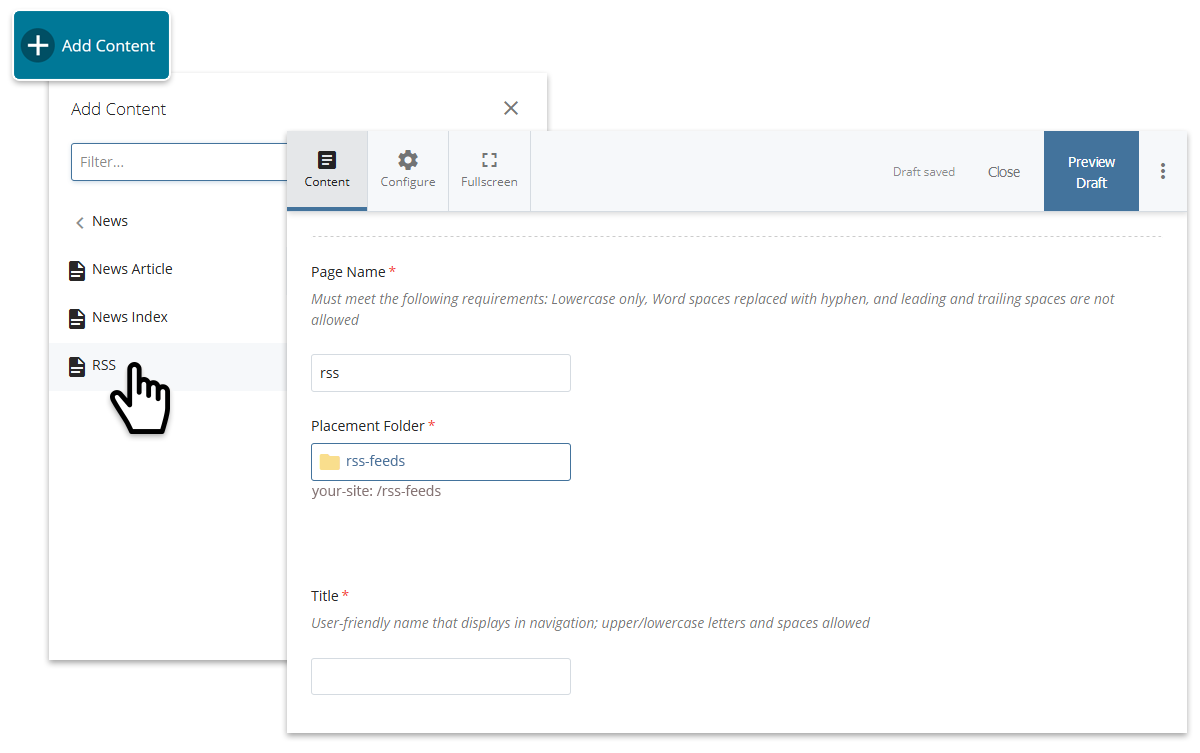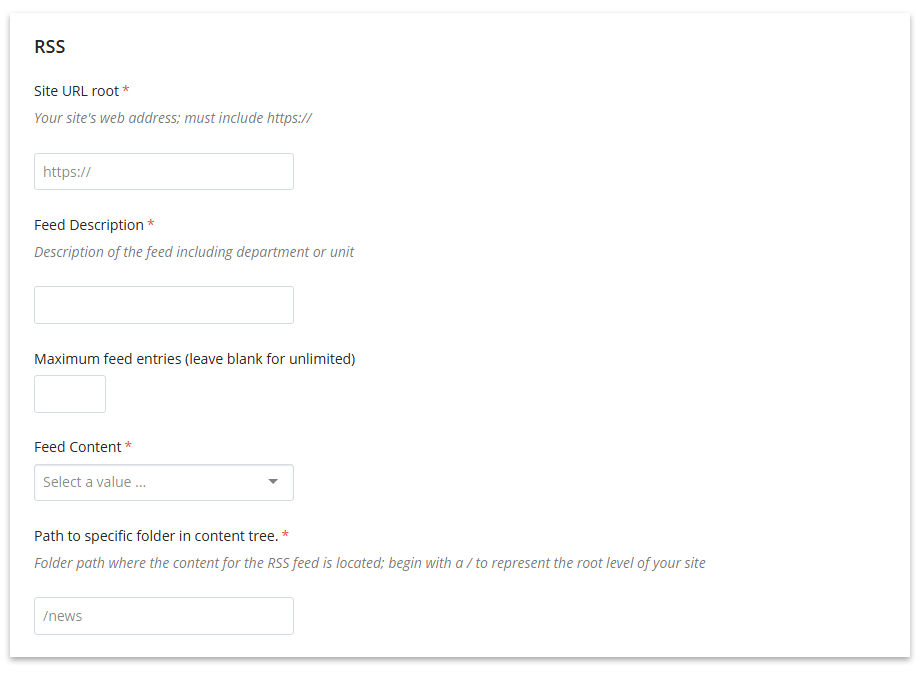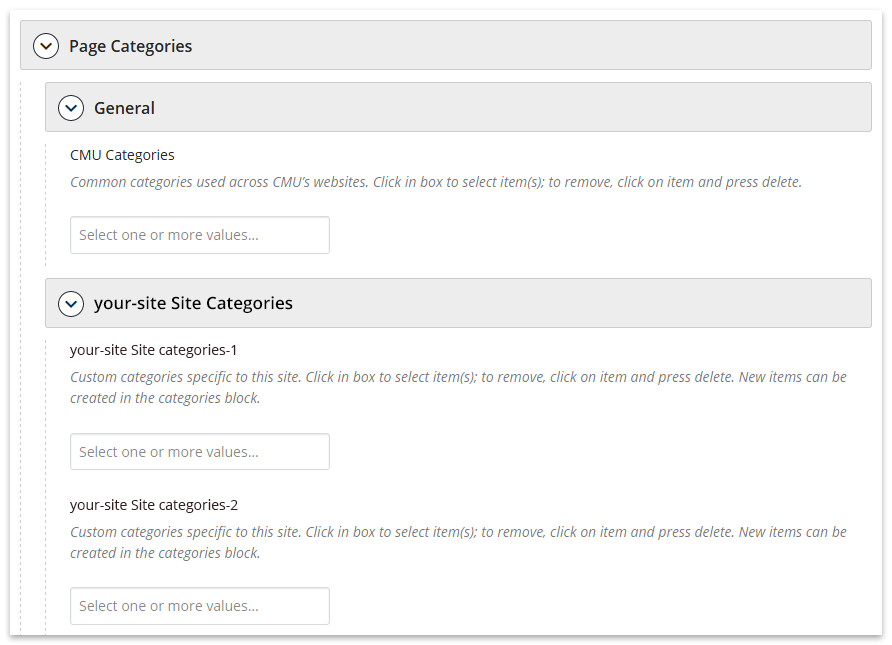RSS
Really Simple Syndication (RSS) is a method of broadcasting news on the Internet. When used in the CMS, RSS comes in handy two ways:
- Auto-populates your web pages with the latest news when RSS is used in News Grids and News Index pages. Pages are always kept fresh!
- Provides a method for your website visitors to subscribe to your news using their preferred RSS feed reader. Your news is automatically delivered to your biggest fans 24/7.
Create an RSS Feed
Ideally, RSS feeds should be contained within a designated RSS folder on your site; if this is the first RSS feed you're creating, first create a folder for it. The folder can be located in the root level or your site and be named something like rss-feeds.
- Select the folder in the asset tree where you want to create the RSS feed
- Click Add Content > News > RSS
- Complete the required information
- Page Name - Enter the system name for the feed (displayed in the asset tree and live URL); follow the requirements provided in the interface. Suggestions: news or news-rss
- Placement Folder - This will reflect the selected folder; click on folder to change if necessary
- Title - Enter the user-friendly name of the RSS feed (e.g., College of Fine Arts News)
- Page Name - Enter the system name for the feed (displayed in the asset tree and live URL); follow the requirements provided in the interface. Suggestions: news or news-rss

Creating a new RSS Feed.
RSS
- Site URL root – The full URL of your website, such as:
https://www.cmu.edu/site-name/ OR
https://cms-staging.andrew.cmu.edu/site-name/ (for testing on staging) - Feed Description – Description of feed; including university and department name is recommended (e.g., Carnegie Mellon University's College of Fine Arts news and stories.)
- Maximum feed entries (optional) – Set a maximum number of entries to include in the feed, or leave blank for unlimited
- Feed Content – Specify whether to include Summaries or Full stories in the feed
- Path to specific folder in content tree – Enter the path to the folder where the content for the RSS feed is located; begin with / to represent the root level of your site (e.g., /news)

RSS edit interface.
Page Categories (optional)
Page Categories allow you to be selective about what news to include in the RSS feed. News Article pages must be tagged with the categories selected here in order to be included (new categories can be created in the categories block; more on categories). If no categories are specified, all news within the folder and its subfolders will be included.
Click in a box to select one or more categories; to remove a category from being selected, click on it and press delete.
- General
- CMU Categories used on your news
- Site Categories (Custom)
- Categories 1 & 2 - Categories specific to your site
- Concentrations - Concentrations specific to your site
- Degrees - Degrees specific to your site

Page categories in the RSS edit interface.
Submit, Publish & Use
- Submit the RSS feed to save it
- Publish the RSS feed to make it available on the web
- Use the RSS feed in a News Grid or promote it for website visitors to use with an RSS feed reader (see tip in next box).
To determine the URL of the RSS feed, enter the full URL of your website, then add the path to the RSS feed such as:
https://www.cmu.edu/site-name/rss-feeds/news.rss
Always add the .rss extension when using the feed.
Tip
Want to promote your RSS feed? Add RSS in the Setup Block under Social Media Links and use the RSS feed's URL for the link. Publish your site, and the RSS icon will appear in the footer of every page. You can't miss it!

Always publish your RSS!
You MUST publish the RSS feed every time a new News Article is created that should be included in the feed. Remember,
Stale news is bad news.